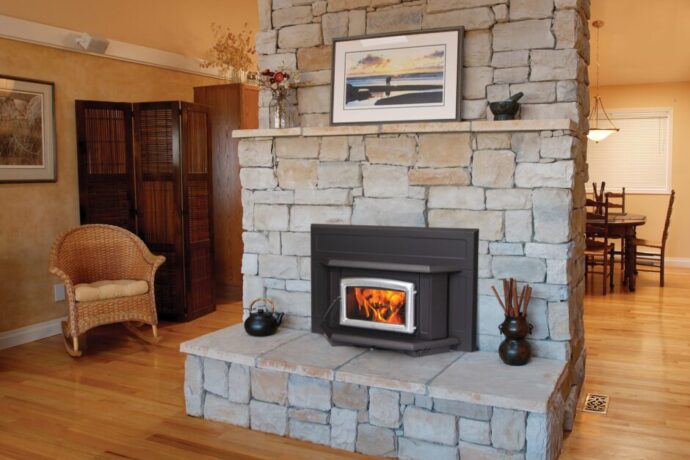Choosing the Right Fireplace: Traditional vs. Wood-Burning Fireplace Inserts
A fireplace adds warmth, charm, and character to any home. But should you choose a traditional indoor wood-burning fireplace or upgrade with a wood-burning fireplace insert? Each option offers distinct benefits in terms of efficiency, installation, maintenance, and cost.
Here the team from Stamford Fireplaces discusses the benefits of each!
Traditional Fireplaces: A Classic Appeal with More Maintenance
A traditional wood-burning fireplace provides a cozy, nostalgic feel, making it a favorite for homeowners seeking a timeless aesthetic. However, they require more maintenance, including chimney cleaning, ash removal, and regular inspections to prevent creosote buildup. Additionally, these fireplaces tend to be inefficient, as much of the heat escapes through the chimney instead of warming your home.
Fireplace Inserts: More Heat, Less Fuel, and Lower Costs
A wood-burning fireplace insert is a modern, efficient solution designed to fit into an existing fireplace. It features a closed combustion system, meaning it retains and distributes heat more effectively while using less wood. The result? A warmer home with lower energy costs. Since inserts retrofit into an existing structure, they also minimize renovation expenses.
Installation Differences: Full Construction vs. Retrofit
A traditional fireplace requires full construction, making it an expensive investment if your home doesn’t already have one. A fireplace insert, on the other hand, is a cost-effective way to upgrade an inefficient fireplace without extensive renovations. If you already have a masonry fireplace, an insert can be installed seamlessly, improving heat output while maintaining the look of a classic fireplace.
Fuel Options: Wood, Gas, or Electric
Both traditional fireplaces and inserts come in multiple fuel options.
- Wood-burning models provide an authentic experience but require regular upkeep.
- Gas options offer convenience, with easy ignition and consistent heat.
- Electric fireplaces are the most low-maintenance, requiring no venting but sacrificing the realism of real flames.
Cost Considerations: Which Option Saves You More?
A traditional indoor wood-burning fireplace can be costly to install, especially if major structural changes are required. In contrast, a wood-burning fireplace insert typically has a lower installation cost since it utilizes an existing fireplace. Additionally, its energy efficiency leads to long-term savings on heating bills, making it a smart financial choice for homeowners looking to reduce energy costs.
Which Fireplace Option Is Best for You?
Choosing between a traditional fireplace and a fireplace insert depends on your priorities. If you value classic charm and don’t mind ongoing maintenance, a traditional fireplace may be right for you. However, if you want an energy-efficient heating solution with lower operating costs, a wood-burning fireplace insert is the better option.
For expert guidance on upgrading your fireplace, contact Stamford Fireplaces today. Our team will help you find the perfect solution to match your home’s style and heating needs.



